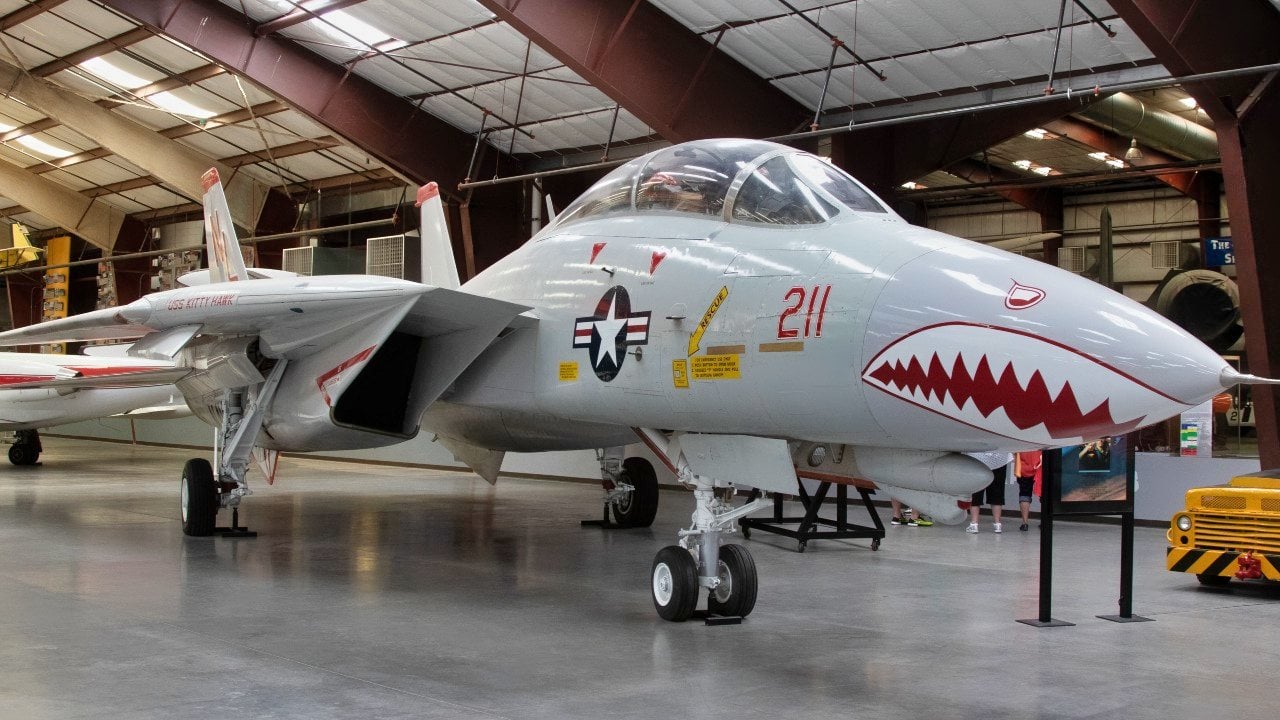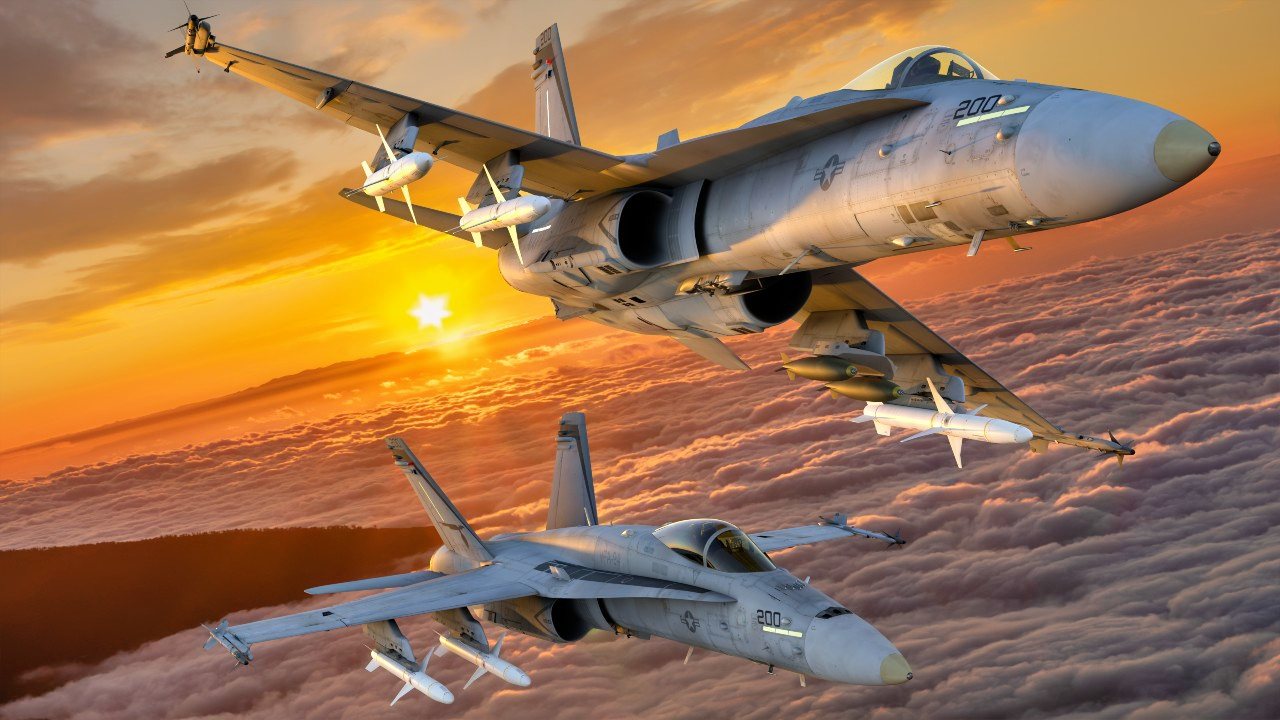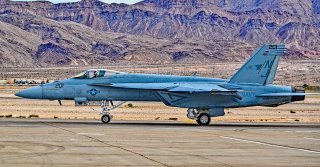Navy Deathmatch: F-14 Tomcat vs. F/A-18 Super Hornet (Who Wins)?
One news outlet spoke with former U.S. naval aviators and actual Topgun—that is, the U.S. Navy Strike Fighter Tactics Instructor program—pilots to learn about the differences between them, and what it’s like to turn and burn in these birds.
If you’ve watched the trailer—which was released on Jul. 18, 2019 —for the next year’s Top Gun: Maverick, then you’ve seen scenes of Tom Cruise rocketing off an aircraft carrier and fighter jets cruising in close formation over the water.
The official two-minute teaser in fact boasts blockbuster scenes with Maverick taking to the skies in F/A-18 Super Hornet and F-14 Tomcat fighter jets.
The difference between the F-14 and the F/A-18E/F represents the technological gulf between aircraft the Navy first deployed in the early 1970s and fighters that began flying on and off carriers in the early 2000s. An important, plot-thickening distinction: the Super Hornets don’t require a dedicated radar intercept officer (RIO). Goose is now optional; the RIO doesn’t exist anymore.
Popular Science spoke with former US naval aviators and actual Topgun—that is, the US Navy Strike Fighter Tactics Instructor program—pilots to learn about the differences between them, and what it’s like to turn and burn in these birds.
The F-14 Tomcat
Perhaps the most widely recognized Navy fighter thanks to its starring role in the original Top Gun, the F-14 Tomcat served as an advanced interceptor and air superiority fighter.
Equipped with a weapon control system that enabled the aircraft’s crew to track 24 hostile targets at a range of 195 miles and attack six simultaneously with AIM-54 Phoenix missiles, deliveries to the Navy began in June 1972 with deployment of operational carrier squadrons in 1975. The F-14 made a brief appearance over Vietnam, flying protective patrols for helicopters effecting the final evacuation of American personnel and foreign nationals from Saigon with no opposition from enemy fighters. The Middle East was destined to become the scene of the Tomcat’s combat initiation during encounters with Libyan fighters during the 1980s. Upgraded F-14A (plus) and F-14Ds came into service in the late1980s and early 1990s, boasting enhanced avionics and more powerful F110-GE-400 turbofans. The aircraft also proved an outstanding air-to-ground platform employing a capability present from the initial design work, but rarely employed. At peak employment, thirty Navy squadrons operated F-14s. Tomcats flew combat missions during the Gulf War and in missions over Iraq and Afghanistan from 2001 until the F-14’s retirement in 2006.
“The F-14 was designed for fleet defense during the Cold-War scenario of Soviet bombers attacking the carrier strike group,” says Vincent Aiello (call sign: Jell-O), the host of the Fighter Pilot Podcast and a former F/A-18 Hornet and Super Hornet pilot and Topgun instructor. The F/A-18, on the other hand, was designed to “be good at a myriad of things.”
The way US Navy aircrews operate fighters has changed, too. The biggest difference noticeable to people who watch the films is that the number of people it takes to make the jets fly is different now. In Top Gun, Goose was the RIO. And operating that radar took a lot of work. “The radar interface for the aircrew was so intensive that it took someone with a dedicated effort to optimize the radar and detect other aircraft,” explains Aiello.

Then there was the computing power on the aircraft—or lack thereof. “It was a Commodore 64 with wings on it,” John DePree (call sign: Cosmo), said on an episode of the Fighter Pilot Podcast focused on the F-14. For example: the mission computer loaded off of magnetic tape.
That magnetic-tape computer had so little memory that its crew had to switch programs depending on what the jet was doing at the moment—the RIO would hit a switch to bring up the bombing program, and then after the bomb-dropping ended, they’d reload the air-to-air program, remembers David Culpepper (call sign: Chili), who flew the Tomcat for nearly a decade.
The computer was old, and the plane was big: Culpepper remembers that when taxiing, it “drove like a truck.” The F-14 had a wingspan of 64 feet. The Tomcat’s replacement, the F/A-18 Hornet and the bigger, newer variants known as Super Hornets, have a wingspan of 40 and nearly 45 feet, respectively. And the Tomcat’s top speed was faster: it’ll hit 1,544 mph, while the Super Hornet goes a pokey 1,190 mph.
Aiello compares the Tomcat to a 1969 Chevy Camaro: “It’s just biggish, brutish, in your face, loud, American muscle.”
The Rhino
Today, the aircraft in the trailer for “Top Gun: Maverick” are Super Hornets (dubbed by their aircrews the Rhino).
The F/A-18 Hornet is US first strike-fighter. It was designed for traditional strike applications such as interdiction and close air support without compromising its fighter capabilities. With its excellent fighter and self-defense capabilities, the F/A-18 at the same time increased strike mission survivability and supplemented the F-14 Tomcat in fleet air defense.
The newest model, Super Hornet, is highly capable across the full mission spectrum: air superiority, fighter escort, reconnaissance, aerial refueling, close air support, air defense suppression and day/night precision strike. Compared to the original F/A-18 A through D models, Super Hornet has longer range, an aerial refueling capability, increased survivability/lethality and improved carrier suitability. [Capability of precision-guided munitions: JDAM (all variants), JSOW and JASSM]

Gone are the days of the RIOs. (If you watch the trailer, the plane at the very end is a Tomcat, present thanks to CGI magic.) The radar system is improved enough that the pilot can fly the plane and use the radar at the same time, no Goose needed.
Super Hornets come in two variants: a single-seater and a two-seater, meaning that unlike a Tomcat, which engineers designed around a two-person crew, a pilot can fly an F/A-18 all by themselves. The two-seaters, technically known as the F/A-18F, can host a “weapons systems officer” in the backseat (abbreviation: WSO, pronounced “whizz-oh”). Alternatively, that backseat can be outfitted with all the controls a pilot would need to fly the Super Hornet.
As told by Popular Science, this is presumably a huge perk for filming. Paramount could put Tom Cruise and other actors in the Rhino while a real Navy pilot is in charge of the plane from the front seat. That wasn’t possible with the Tomcat, which never had the pilot’s controls in Goose’s seat
Gone, of course, is the computer with magnetic tape: the Super Hornet has six solid-state computers on board. And a display on the Super Hornet now is touch-sensitive, so it’s more like an iPhone than a Commodore 64.
While the Tomcat is powerful, the Hornet and Super Hornet are more agile. If an F/A-18 and F-14 were to fight, the former would have an advantage in that realm. “I can attest to that personally,” says Aiello. And with a modern aircraft comes a plane easier to fly: the Tomcat was challenging to fly well, while the Hornet is easier to be good in, says Culpepper.
The following video is a trailer comparison between Top Gun ad Top Gun: Maverick. What do you guys think? Which one is cooler?
This first appeared in Aviation Geek Club here.
Main image is Creative Commons. Additional images are from Shutterstock.

